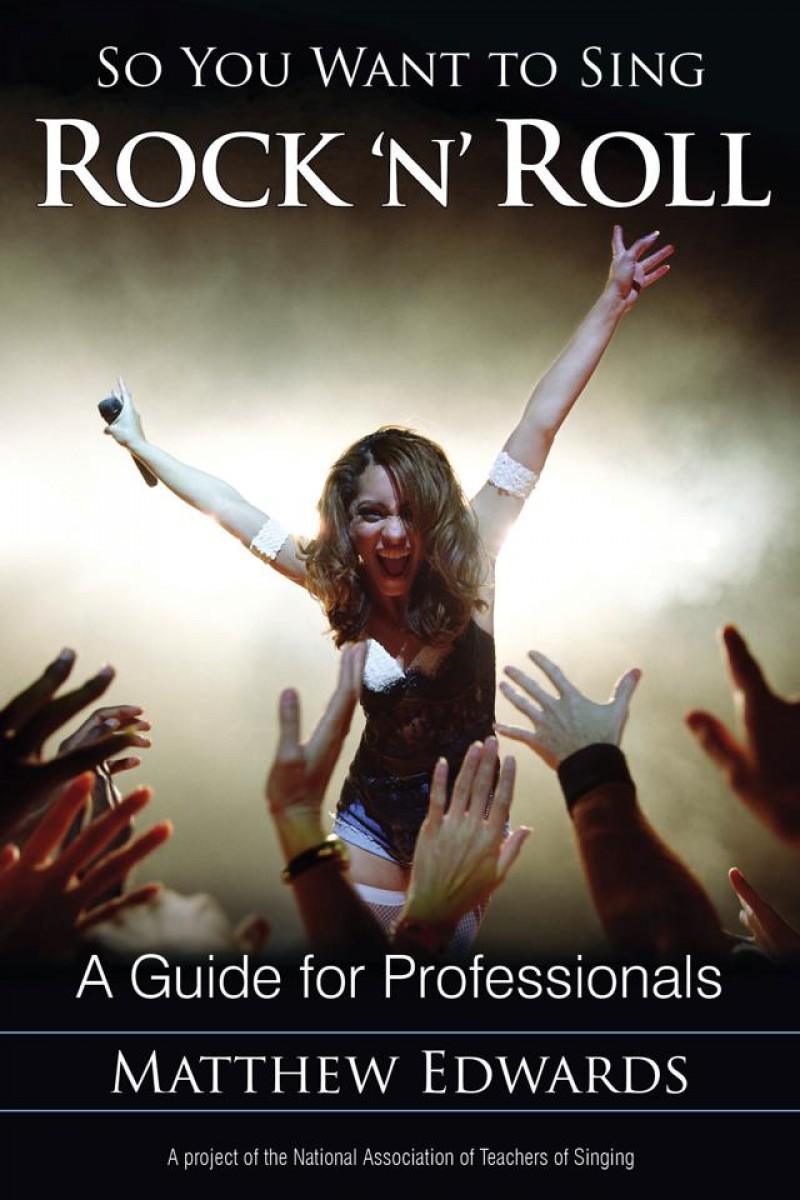Matt Edwards
Associate Professor of Voice, Shenandoah Conservatory Artistic Director of the CCM Vocal Pedagogy Institute
Mix it up Monday: Nasality
 Nasality is a common issue that you will encounter in the voice studio. While nasality is rarely desired in classical singing (French nasal vowels being the obvious exception), in some CCM styles it is considered acceptable. Whereas there are fairly standardized expectations of what certain voice types will sound like in classical singing (i.e. the German fach system), in CCM styles there are no standardized fachs. Individuality is what is important in CCM styles and for some singers, part of that individuality is a nasal quality. For example Rufus Wainwright and Britney Spears
Nasality is a common issue that you will encounter in the voice studio. While nasality is rarely desired in classical singing (French nasal vowels being the obvious exception), in some CCM styles it is considered acceptable. Whereas there are fairly standardized expectations of what certain voice types will sound like in classical singing (i.e. the German fach system), in CCM styles there are no standardized fachs. Individuality is what is important in CCM styles and for some singers, part of that individuality is a nasal quality. For example Rufus Wainwright and Britney Spears
The voice becomes nasal when tone escapes through the nasal cavity
instead of the mouth. This happens when the soft palate is in a lowered position.

A low soft palate.
To fully eliminate nasality, you need to completely seal off the nasal cavity. There are many different ways to help a student do that.
- W. Stephen Smith describes an indirect approach in his book “The Naked Voice.” Smith suggests that the soft palate will rise when air flows through the voice freely. While inhaling through a yawn has been a common tool for addressing this, Smith suggests that it can trigger depression of the posterior tongue which constricts the larynx. Instead he suggests thinking of inhaling through the upper half of a yawn. Furthermore, he believes that when air is freely flowing and the tongue and lips define the vowel without entanglement, the soft palate will naturally rise (Smith, 2007, p. 110).
- In his book “Solutions for Singers,” Richard Miller suggests using the centuries old technique of pinching the nose shut when singing non-nasal vowels. If the singer feels a sensation of the sound being cut-off when pinching the nose shut, then the soft palate is falling. When they achieve a sound that is unaffected by pinching the nose, then the soft palate is elevated. Once they find this position, have them release the nose and continue to sing the vowel with a raised velum (Miller, 2004, p. 112).
- Roger Love, author of “Set Your Voice Free,” believes that nasality is often exacerbated by an elevated larynx. Love suggests that when the larynx rises, it narrows the back part of the throat and sends air toward the nasal cavity. Love uses a sound he calls the “Yogi Bear/Dudley Do-right”to teach a low laryngeal position. After the student has mastered this sound quality, he has them monitor the vertical position of their larynx by placing their fingers on their Adam’s apple. When they sense the larynx rising, he instructs them to add more Yogi Bear/Dudley Do-right (Love, 1999, p.100-103).
- Gillyanne Kayes, author of “Singing and the Actor,” uses a series of exercises to teach soft-palate movement when addressing nasality (discussed in this previous post). To help students experience an elevated soft palate she uses an exercise called “Finding the Seal.” In this exercise she has the student make a /p/ with their lips and build up breath pressure behind the closed lips (the cheeks will puff out like a blowfish). She then instructs them to alternate holding the breath pressure behind their lips and exhaling through their nose. As they continue to repeat the exercise, she tells them to focus on sensing what is moving in the back of their mouth. What they feel moving is their soft palate (Kayes, 2004, p. 59).
No matter how you choose to address nasality, it is important to know that it is a soft palate issue first and foremost. There could be contributing factors such as a high laryngeal position or a lack of airflow, but at the end of the day if the soft palate does not rise, you will not be able to reduce nasality. It is also important to remember that if you are working with a CCM singer, they may want that nasal quality even if you dislike it. One of the easiest ways to learn what vocal qualities they like is to ask them to create a Spotify or YouTube playlist of their favorite artists and share it with you. This will give you an idea of their tonal goals and help you assist them in achieving those goals.
If you have other ideas on how to address nasality, please share them below. Thanks for reading!
Matt
Works Cited:
Kayes, G. (2004). Singing and the actor. New York: Rutledge.
Love, R. (1999). Set your voice free. New York: Little, Brown and Company.
Miller, R. (2004). Solutions for singers. New York: Oxford University Press.
Smith, S. (2007). The naked voice. New York: Oxford University Press.




Additional things that can help reduce or eliminate nasality: any consonants that require an oral breath pressure increase. In addition to all of the plosives (especially the voiced plosives [g b d]), fricatives require a slightly increased pressure behind the particular articulator constriction (whether accomplished by the lips [β], tongue and palate [ç], tongue and teeth [ʃ ʒ z s ð]), lips and teeth [v, f], basically any resister that is downstream from the vocal folds. It is awkward, at best, and difficult to produce these sounds with leakage through the nose. Plosives achieve the most complete closure of the palate. The effectiveness of these consonants in closing the nasal tract has to do with the level of oral pressure needed for their articulation: the stronger the necessary pressure, the greater the palatal closure. Students with persistent nasality are remarkably adept at renasalizing after such consonants, but rapid repetition of the consonant surrounding the nasal vowel usually overcomes that tendency. (Compare /mam/ to /bab/ or /mim/ to /bib/ to feel and hear the difference; then try rapidly repeated /bababababa…b/ or /bibibibibi…b/ followed by sustaining the final vowel.) There are classical pedagogic approaches that believe slight nasalance is useful and even necessary for ease of phonation (Bert Coffin), and others that oppose that idea (Richard Miller). However, there is agreement that perceivable nasality–in classical timbre at least–is not desireable. This is an area that is receiving further research (Perna, Gill, Sundberg).
LikeLike
Great information and ideas, thank you for sharing!
Matt
LikeLike
If nasality is something to be avoided in classical singing, why do so many voice instructors use exercises (humming, or m, or ng) that encourage nasality? Perhaps nasality can lead to improved vocal function? Just trying to start a conversation.
LikeLike
Great question. There are classical singers who use some nasal resonance in their singing as mentioned by Ken (here is a link to one of several studies that investigates the issue: http://www.speech.kth.se/prod/publications/files/qpsr/1993/1993_34_4_035-042.pdf). The /ng/ position is used by some teachers to train an arched tongue position to counteract tongue retraction/depression. Others use /ng/, /n/, and /m/ to train the students to feel the sympathetic vibrations of their voice in the “mask.” The idea is that when they then open to a vowel, they will maintain the vibratory sensations of the consonant. Finally, the /ng/, /m/, and /n/ all fall under the classification of semi-occluded vocal exercises and can be beneficial when warming up and cooling down the voice.
LikeLike
Hey Thank for this Matt! I was just working of helping a student who has too much air escaping from her nose. Keep up these blogs they are soooo helpful!! Maria
LikeLike
For severe cases, I have the singer phonate through a straw, but with the straw in a glass or bottle of water. The goal is that they should phonate AND make bubbles. If the soft palate is down: no bubbles. If it’s up: bubbles. When they get the hang of this, then we take away the water and do straw only. However, the singer first starts with just air through the straw and holding a hand a few inches in front of the straw to feel the cool air exiting the straw. Then the singer phonates through the straw while still using a hand to monitor the air exiting the straw.
LikeLike
Great idea, thanks for sharing!
LikeLike